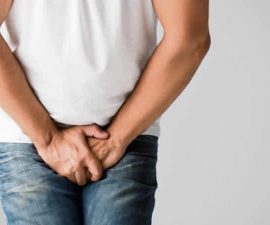… Continued …
- Abdominal pain that worsens with coughing, standing, laughing, walking, getting out of bed, or other certain activities that cause more pressure in the abdomen – also the pain is more likely to get better when lying flat on the back.
- Feeling of fullness or bloating in the lower abdomen.
- Pressure, heaviness, weakness, aching sensation, or sometimes burning in the abdomen.
- In women, it’s also possible to experience symptoms that might seem have nothing to do with a hernia – such as vaginal pain, bladder pain, sudden urge to urinate, difficulty swallowing, acid reflux, and chest pain.
Since symptoms mentioned above can also be caused by something else, don’t make a conclusion on your own. Again, see a doctor for correct diagnosis!
To help determine whether or not hernia is the real culprit of your pain, here are some tips:
- First, understand your pain! Write down the answers of some questions such as ‘How does it feel like?’, ‘Where does it occur?’, ‘Are there any certain situations or activities that worsen or improve the pain?’! Some of these questions can help a lot for your diagnosis. Be very specific when explaining your symptoms to your doctor!
- Second, see a health professional who is experience in invisible (hidden) hernias! Or suggest your doctor that a hernia may be the possible culprit of your pain (if you’d rather stay with your doctor)!
Interestingly, some doctors believe that the smaller the hole – the harder to cope with (the worse the pain). A small hole is sometimes more difficult to show up even with MRI test. It usually looks more clearly when something goes through it.
It’s not fully understood what causes female hernias become invisible. Over time, invisible hernia may eventually protrude and cause a lump.
Article sources:
- https://womenshealth.com/hidden-problem-causing-chronic-pelvic-pain/
- http://www.huffingtonpost.com/glenn-d-braunstein-md/his-and-her-hernias-pelvi_b_950590.html
On July 31, 2017




